High-strength and high-modulus fibers with a carbon content of more than 90%. High temperature resistance ranks first among all chemical fibers. It is made of acrylic fiber and viscose fiber, which is oxidized and carbonized at high temperature. It is an excellent material for manufacturing aerospace and other high-tech equipment.
Each carbon fiber is composed of thousands of even smaller carbon fibers, about 5 to 8 microns in diameter, almost entirely made of carbon. The earliest generations (eg T300, HTA and AS4) had 16-22 micron diameters. Newly developed carbon fibers such as IM6 or IM600 have a diameter of about 5 microns.
At the atomic level, carbon fibers are very similar to graphite, consisting of layers of carbon atoms arranged in a hexagonal pattern (graphene flakes). The difference between the two lies in the way the layers are connected. Graphite is a crystalline structure, and its interlayer connections are loose, while carbon fiber is not a crystalline structure, and the interlayer connections are irregular. This prevents slippage and increases material strength.
Generally, the density of carbon fiber is 1750 kg/m3. The thermal conductivity is high but the electrical conductivity is low, and the specific heat capacity of carbon fiber is also lower than that of copper. When heated, the carbon fibers become thicker and shorter. Although the natural color of carbon fiber is black, it can be dyed a different color.
| Another Name | Nature | Features | Type |
|---|---|---|---|
| Carbon Rice Fiber | One-Dimensional Structural Carbon Materials | Certain Activity | PAN-based, viscose silk-based, etc. |
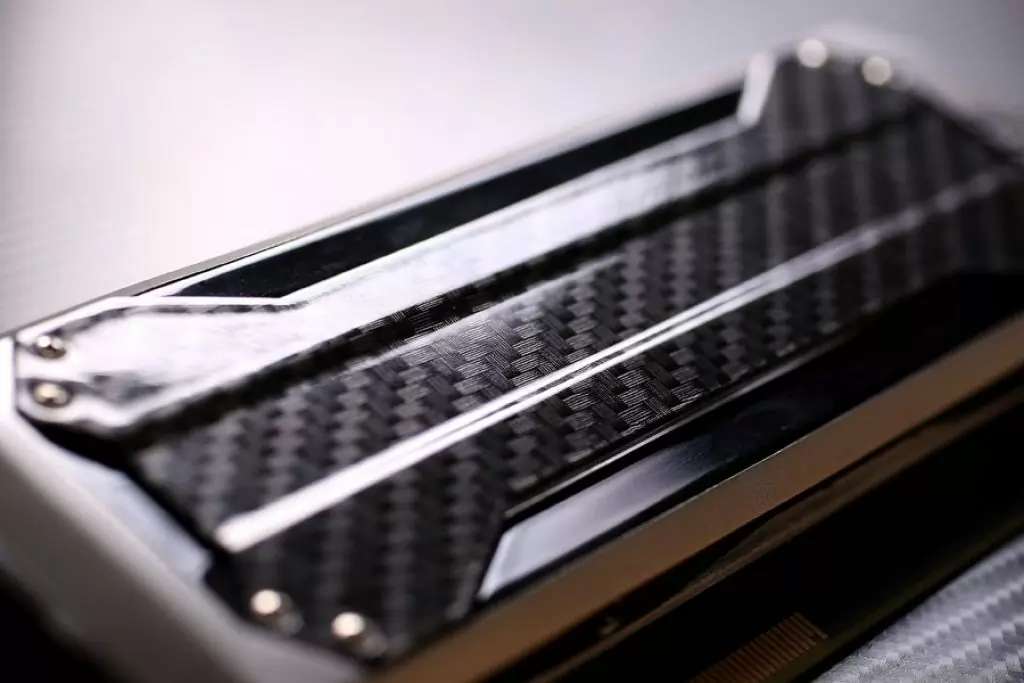
Carbon Fiber Define:Carbon fiber material is a special fiber composed of carbon elements. It has the characteristics of high temperature resistance, friction resistance, electrical conductivity, thermal conductivity and corrosion resistance. Its shape is fibrous, soft, and can be processed into various fabrics. Because of its graphite microcrystalline structure is preferentially oriented along the fiber axis, it has a high strength and modulus.
The density of carbon fiber is low, so the specific strength and specific modulus are high. The main use of carbon fiber is as a reinforcing material to be compounded with resin, metal, ceramic and carbon to manufacture advanced composite materials. Carbon fiber reinforced epoxy resin composites have the highest specific strength and specific modulus among existing engineering materials.
The Brief History Of Carbon Fiber
- In 1879, Edison used cellulose fibers, such as bamboo, flax or cotton yarn as raw materials, to first obtain carbon fibers and obtain a patent.
- In the early 1950s, due to the development of cutting-edge technologies such as rockets, aerospace and aviation, new materials with high specific strength, specific modulus and high temperature resistance were urgently needed. Filament, this process laid the foundation for the industrialization of carbon fiber. For more than 40 years, the major technological advances that carbon fiber has experienced are as follows:
- In the early 1950s, the Wright-Patterson Air Force Base in the United States used viscose fiber as a raw material to successfully trial-produce carbon fiber. The product was used as ablation material for rocket nozzles and nose cones, and the effect was very good. In 1956, the United Carbide Corporation of the United States successfully trial-produced high-modulus viscose-based carbon fiber, and the trade name “Thornel-25” was put on the market. At the same time, it developed the technology of stress graphitization to improve the strength and modulus of carbon fiber.
- In the early 1960s, Japan’s Jinto Akio invented a method for producing carbon fiber from polyacrylonitrile (PAN) fiber and obtained a patent. In 1963, Nippon Carbon Corporation and Tokai Electrode Corporation developed polyacrylonitrile-based carbon fiber with Shinto’s patent. In 1965, Nippon Carbon Corporation successfully produced ordinary polyacrylonitrile-based carbon fibers. In 1964, the Royal Aeronautical Research Center (RAE) of the United Kingdom produced high-performance polyacrylonitrile-based carbon fibers by adding tension during pre-oxidation. By Courtaulds Company, Hercules Company and Rolls-Royce Company adopt RAE technology to carry on the industrial production.
- In 1965, Japan’s Otani Sugiro first made PVC pitch-based carbon fiber, and published a pioneering research report on pitch-based carbon fiber.
- In 1969, Nippon Carbon Corporation successfully developed high-performance polyacrylonitrile-based carbon fibers. In 1970, Toray Textile Inc. of Japan developed high-performance polyacrylonitrile-based carbon fibers by relying on advanced polyacrylonitrile precursor technology and exchanging carbonization technology with United Carbide Corporation of the United States. In 1971, Toray Corporation launched a high-performance polyacrylonitrile-based carbon fiber product (Torayca) on the market. Since then, the performance, variety and output of the products have continued to develop, and they are still in the leading position in the world. Since then, Japan’s Toho, Asahi Kasei, Mitsubishi Rayon and Sumitomo Corporation have successively invested in the production of polyacrylonitrile-based carbon fibers. (see polyacrylonitrile-based carbon fiber)
- In 1970, Japan Kureha Chemical Industry Co., Ltd. adopted the patent of Otani Sugiro, and firstly built a production plant with an annual output of 120t of general type (GPCF) pitch-based carbon fiber. In 1978, the output increased to 240t. After the product was used as a cement reinforcement material, it was found to be very effective, and the output increased to 400t in 1984 and 900t again in 1986. In 1976, the United Carbide Company of the United States successfully produced high-performance mesophase pitch-based carbon fiber (HPCF), with an annual output of 113t, which was increased to 230t in 1982 and 311t in 1985.
- Since 1982, Toray, Toho, Nippon Carbon Corporation, Hercules, Celanese, and Courtaulds, UK, etc., have successively produced high-strength, ultra-high-strength, high-modulus, ultra-high-modulus, high-strength medium mold and high-strength high-modulus. For other types of high-performance products, the tensile strength of carbon fiber is increased from 3.5GPa to 5.5GPa, and small-scale products reach 7.0GPa. The modulus has been increased from 230GPa to 600GPa, which is a major breakthrough in carbon fiber process technology, bringing application development to a new high-level stage.
- Significant progress has been made in asphalt science since 1981, and several new processes for preparing mesophase asphalt have been developed, such as the pre-mesophase method of Kyushu Industrial Laboratory in Japan, the new mesophase method of EXXON Corporation of the United States, and the potential intermediate phase method developed by Gunma University in Japan. The phase method promotes the development of high-performance pitch-based carbon fibers. Subsequently, Japan’s Mitsubishi Chemical Corporation, Osaka Gas Corporation, and Nippon Steel Corporation successively built a number of high-performance carbon fiber production plants of different specifications. Its characteristic is that the modulus increases while also increasing the strength. The 1980s was a boom period for pitch-based carbon fibers.
- Viscose-based carbon fiber has not been developed since the mid-1960s, and only a small number of products are produced for military and special sectors.
The Manufacturing Crafts Of Carbon Fiber Material
The route of modern carbon fiber industrialization is the precursor fiber carbonization process. The composition and carbon content of the three raw materials used are shown in the table.
The name of the fibril used for the manufacture of carbon fiber Chemical composition Carbon content/% Carbon fiber yield/% Viscose fiber (C6H10O5) n4521~35 Polyacrylonitrile fiber (C3H3N) n6840~55 Pitch fiber C, H9580~90
The process of making carbon fibers with these three kinds of fibrils includes: stabilization treatment (air at 200-400°C, or chemical treatment with flame-retardant reagents), carbonization (400-1400°C, nitrogen) and graphitization (above 1800°C) , under an argon atmosphere). In order to improve the adhesion between carbon fiber and composite matrix, it is necessary to carry out surface treatment, sizing, drying and other processes.
Another method of making carbon fibers is vapor growth. In the presence of a catalyst, the mixed gas of methane and hydrogen is reacted at a high temperature of 1000°C to obtain discontinuous chopped carbon fibers with a maximum length of 50 cm. Its structure is different from polyacrylonitrile-based or pitch-based carbon fibers, easy to graphitize, good mechanical properties, high electrical conductivity, and easy to form interlayer compounds. (see Vapour Growth Carbon Fibers).
The Case Studies Of Be-cu Carbon Fiber Rapid Prototype Shop
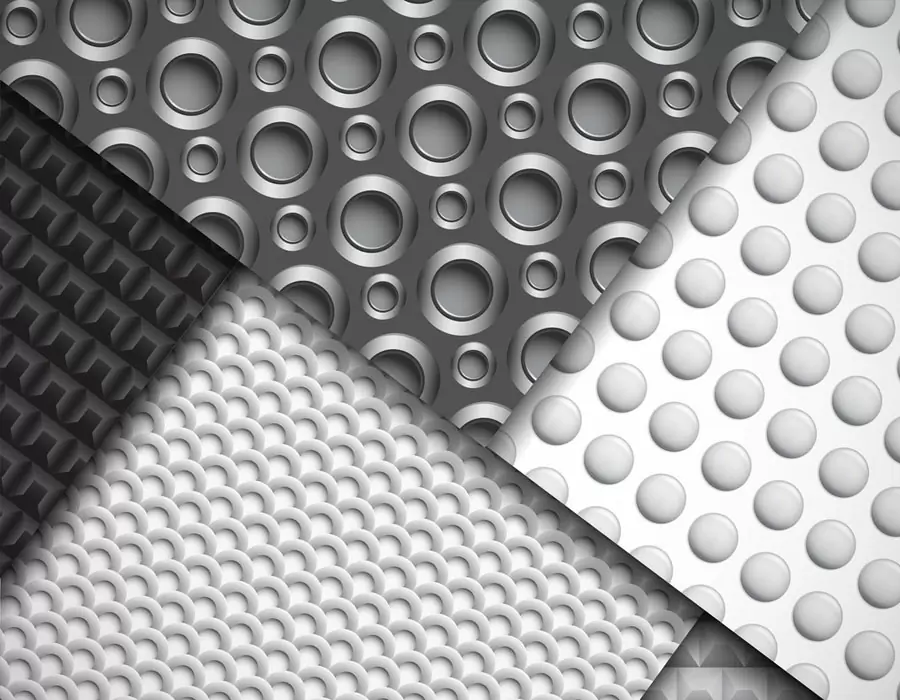
ISO 9001 certified. BE-CU Prototype Offering CNC machining carbon fiber and other manufacturing services for carbon fiber marterial. Various capabilities include notching, labeling, drilling carbon fiber, grinding, laser cutting carbon fiber, finishing, plating, marking, CNC milling carbon fiber and turning carbon fiber.We stock high quality 3k carbon fiber sheet in a variety of thickness, types and finish. Its a great material used in applications where light weight and strength are needed such as drones. Unlike other workshops, we have no min order and are often filling orders with a single part. We also don’t make you pay for the full sheet and you only get charged for what is used. With a large selection of material, you should find everything you need to make your project come to life. We are also able to handle larger production runs and provide a competitive pricing. If we don’t have the material or finish you require, we are more the willing to look at bringing it in for you.
What Is Carbon Fiber?Carbon fiber is made of polyacrylonitrile (PAN) (or pitch, viscose) and other organic fibers by carbonization (removal of most elements except carbon) by pyrolysis method under inert gas at high temperature above 1,000 °C. Inorganic polymer fibers with a carbon content of more than 90%.
-

3D Printing Continuous Fibres
-

3D Printing Short Fibre Filled Wires
-
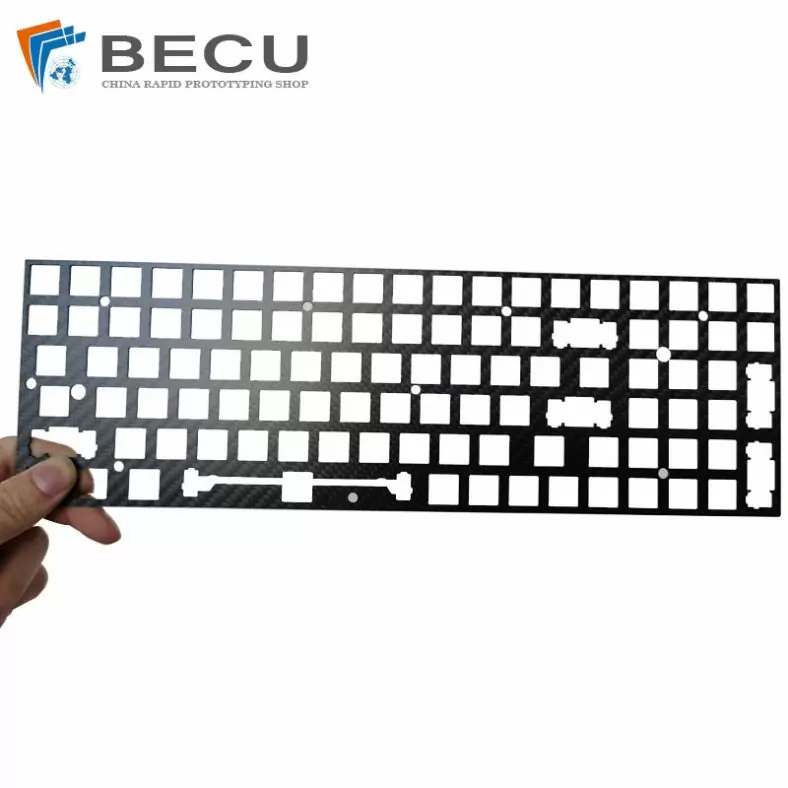
Laser Cutting Carbon Fiber Positioning Keyboard
-

Cnc Turning Industrial Copper-Aluminum Clad Carbon Fiber Machinery Parts
-
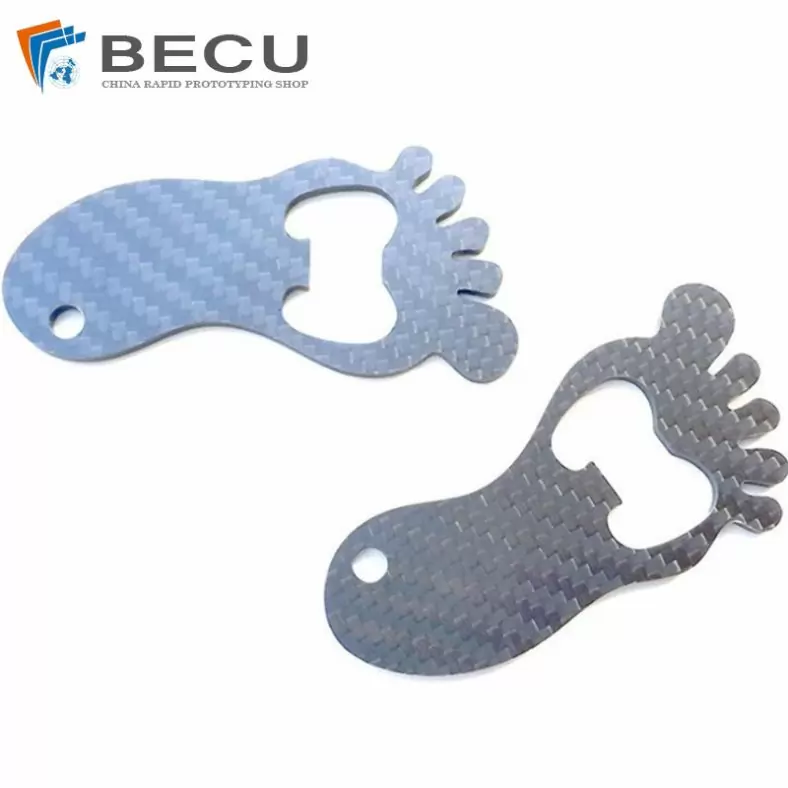
Carbon Fiber Luggage Tag Ornaments
-
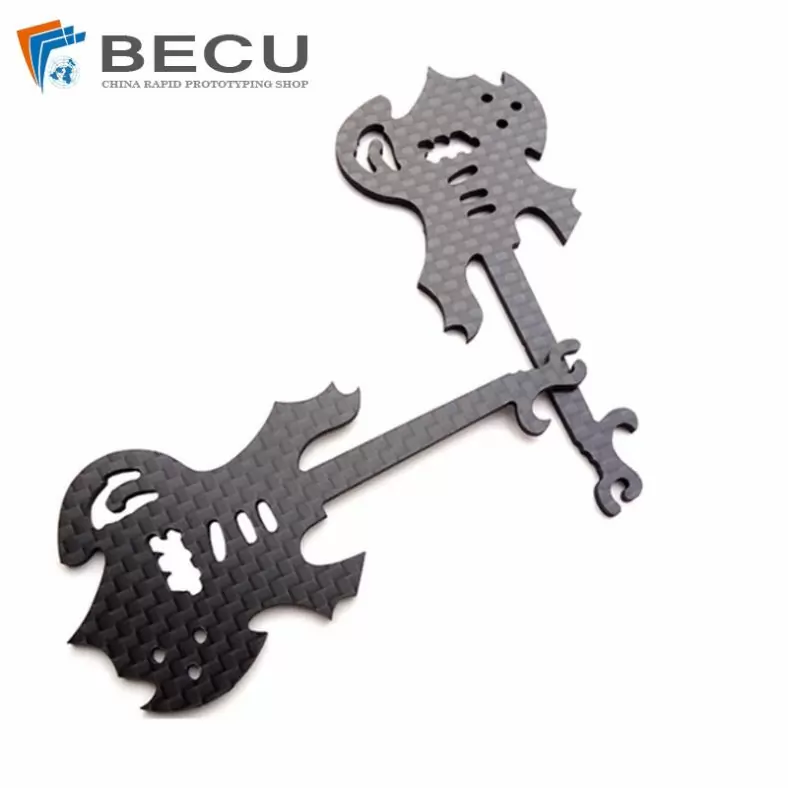
Laser Cutting Carbon Fiber Guitar Shape Crafts
-
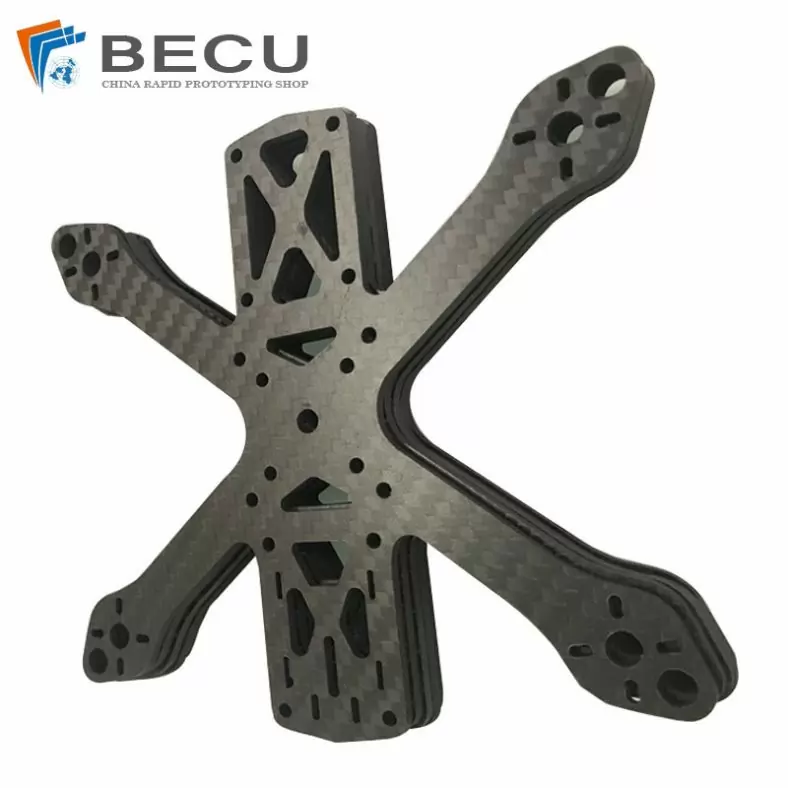
Laser Cutting Carbon Fiber Drone Rack
-
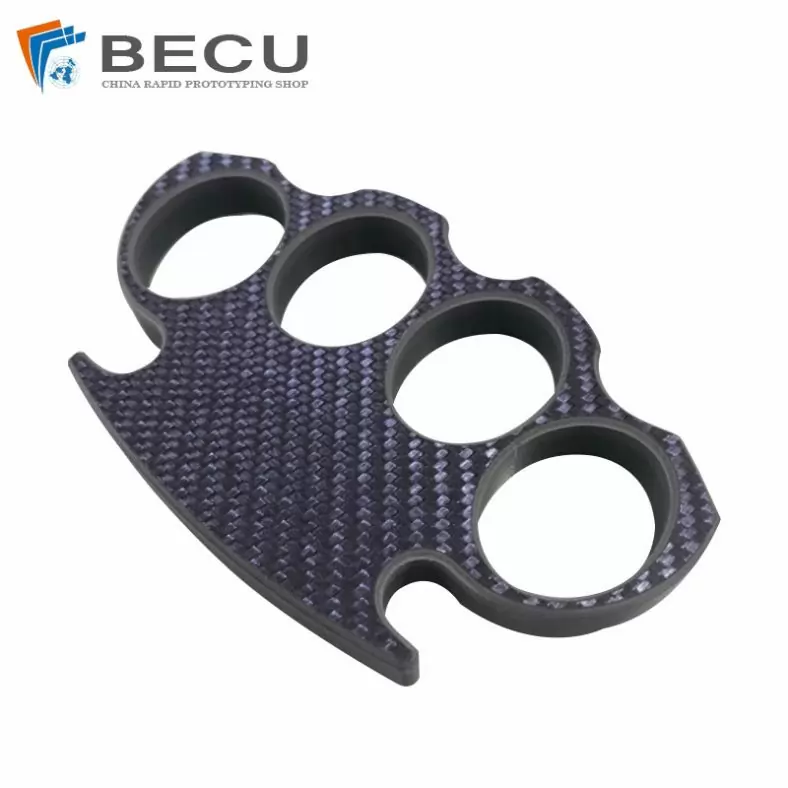
Cnc Milling Carbon Fiber Finger Buckle
The Classification And Naming Of Carbon Fiber Material
At present, the main products of carbon fiber are polyacrylonitrile, pitch and viscose. The word “carbon fiber” is actually a general term for a variety of carbon fibers, so classification and naming are very important.
In the late 1970s, the International Union of Theoretical and Applied Chemistry (IUPAC) regulated the classification and naming of carbon fibers. First, use PAN (polyacrylonitrile), MP (mesophase pitch) and VS (viscose) to indicate the type of carbon fiber, and then use lowercase English letters to indicate the heat treatment temperature, such as lht (indicates heat treatment temperature, below 1400 ℃), hht (heat treatment temperature) The temperature is above 2000 ℃), and then add the symbol representing the performance (such as HT for high strength, HM high mode, SHT ultra-high strength, HTHS high strength and high strain, IM medium mode and UHM ultra-high mode, etc.). At the same time, it is pointed out that polyacrylonitrile-based, viscose-based and ordinary pitch-based carbon fibers are all polymer carbons that are difficult to graphitize, while mesophase pitch-based carbon fibers and vapor-grown carbon fibers are easily graphitizable carbons.
At the Third International Carbon Fiber Conference (London, 1985), it was proposed to classify carbon fibers into the following 5 grades according to their mechanical properties.
- Ultra-high modulus (UHM): the modulus is above 395GPa;
- High modulus (HM): the modulus is between 310 and 395GPa;
- Intermediate modulus (IM): the modulus is between 255 and 310GPa;
- Ultra-high strength grade (UHT): the strength is above 3.5GPa,
- Modulus below 255GPa;
- High Strength Grade (HT): Strength up to 3.5GPa.
Both classification methods have shortcomings. At present, the classification of high-performance carbon fiber products is indicated by the manufacturer: the type of fibrils, the number of monofilament holes, diameter, arrangement (such as parallel, entangled, twisted, etc.), with or without surface treatment (and its type), with or without sizing (and the type of slurry), etc. Some important high-performance trade names and properties can be seen in polyacrylonitrile-based carbon fibers and pitch-based carbon fibers.
The Application Of Carbon Fiber
In 2009, the global demand for carbon fiber composite materials was valued at approximately $10.8 billion, a decrease of 8-10% from the previous year. It is expected to reach US$13.2 billion by 2012 and expand to US$18.6 billion by 2015, with an annual growth rate of over 7%. Strong demand comes from aircraft and aerospace, wind power, and from the automotive industry.Because carbon fiber is light and stiff, it is very versatile.
Composite Material
The reinforced plastic made of carbon fiber is strong and light in texture, resistant to high temperature, radiation, water and corrosion. It is an excellent material for manufacturing aircraft, weapons and corrosion-resistant equipment.
In recent years, carbon fiber has been widely used in large aircraft, such as Airbus A350 and A380, Boeing 787 all use carbon fiber composite materials to reduce fuel consumption.
In addition, the blades of large wind turbines, the body of racing cars and automobiles are all important factors for the increase in the demand for carbon fiber composite materials. Bicycles also use carbon fiber composite materials as the frame, but due to the high manufacturing cost of carbon fiber composite materials, they can only be used for high-end bicycles.
Textile
The precursors of carbon fibers are polyacrylonitrile (PAN), rayon and pitch. Carbon fiber filament yarns are used in a number of processing technologies – immediate uses are for pre-impregnation, filament winding, pultrusion, weaving, weaving, etc.
Microelectrode
Carbon fiber is used in the fabrication of carbon fiber microelectrodes. In this application typically a single carbon fiber with 5-7 μm diameter is sealed in a glass capillary. The tip of the capillary is either sealed with epoxy resin and polished to make a carbon fiber disk microelectrode, or the fiber is cut to a length of 75-150 microns to make a carbon fiber cylindrical electrode. The use of carbon fiber microelectrodes can also detect biochemical signals in amperometric detection or fast scanning cyclic voltammetry.
Biomedical Industry
After carbon fiber is activated, it becomes “activated carbon fiber”. This activated carbon fiber has a large number of micropores, forming nano-space, and has a large specific surface area. With the ability of adsorption and desorption, the most common products are masks used in daily life. This material is also used in various filters or water purifiers.
Manufacturing Process
Generally, polyacrylonitrile (PAN), rayon, viscose fiber and other polymer raw materials are used for pre-oxidation in air at 200-300 °C, and then under the protection of inert gas such as argon, at a high temperature of about 1700 °C. The process of expelling non-carbon atoms (carbonization), and then heating to 2600-3000 ° C to form carbon fibers. Filaments of carbon fiber may be further processed to improve quality and then wound into bobbins.
The Development Outlook Of Carbon Fiber Material
In the early 1990s, high-performance and ultra-high-performance carbon fibers were available, and future work is expected to focus on improving processes, expanding production, reducing costs, and developing applications. Some special carbon fibers, such as anti-oxidation carbon fiber (to improve the service temperature of composite materials), low-density carbon fiber (for 0.035mm ultra-thin prepreg tape), high thermal conductivity and low resistance carbon fiber (to meet the shielding electromagnetic and radio frequency interference, and Can dissipate excess thermal energy), low thermal expansion coefficient carbon fiber (for satellite antenna systems, mirrors, etc.), hollow carbon fiber (for aircraft manufacturing industry, improve the impact toughness of composite materials, high temperature filter media in nuclear reactors, separation of biomolecular serum and plasma media) and activated carbon fibers, with the development of science and engineering will have great development. Vapor-grown carbon fiber has a stable process in the near future, and there will be obvious progress in continuous production, and the date of industrial production is not expected to be too far away
